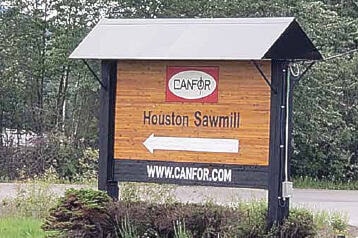Canfor is including its mill here in a wholesale bid to reduce its carbon emissions to a net-zero status by 2050.
It’s beginning by setting 2024 as a date to have its global supply chain and woodlands emissions measured and then to set reduction targets.
By 2030 it expects to reduce its carbon emissions from its pulp mills and sawmills by 42 per cent, using 2020 as a base year, on its way to its target date of 2050.
Net zero is taken to mean not adding to the volume of greenhouse gases, something achieved by reducing emissions as much as possible and then, if there any subsequent emissions, removing an additional amount.
means not adding to the amount of greenhouse gases in the atmosphere. Achieving it means reducing emissions as much as possible, as well as balancing out any that remain by removing an equivalent amount from the atmosphere.
“We are committed to reducing our global operating, woodlands and supply chain emissions and investing in bio-innovation to create new opportunities for our products to reduce the use of fossil-fuel intensive materials,” said Canfor president and CEO Don Kayne.
So far, the company says it’ll spend at least $250 million over the next eight years to meet that goal of reducing emissions by 42 er cent and spend the majority of that amount in western Canada.
Another Canfor official, Michelle Ward, said the company was focusing its efforts in its sawmills by”identifying electrical efficiencies and clean fuel opportunities.”
“We’re still in the process of identifying the opportunities at our Houston facility,” she said.
